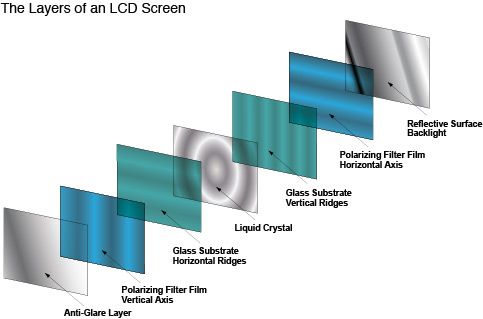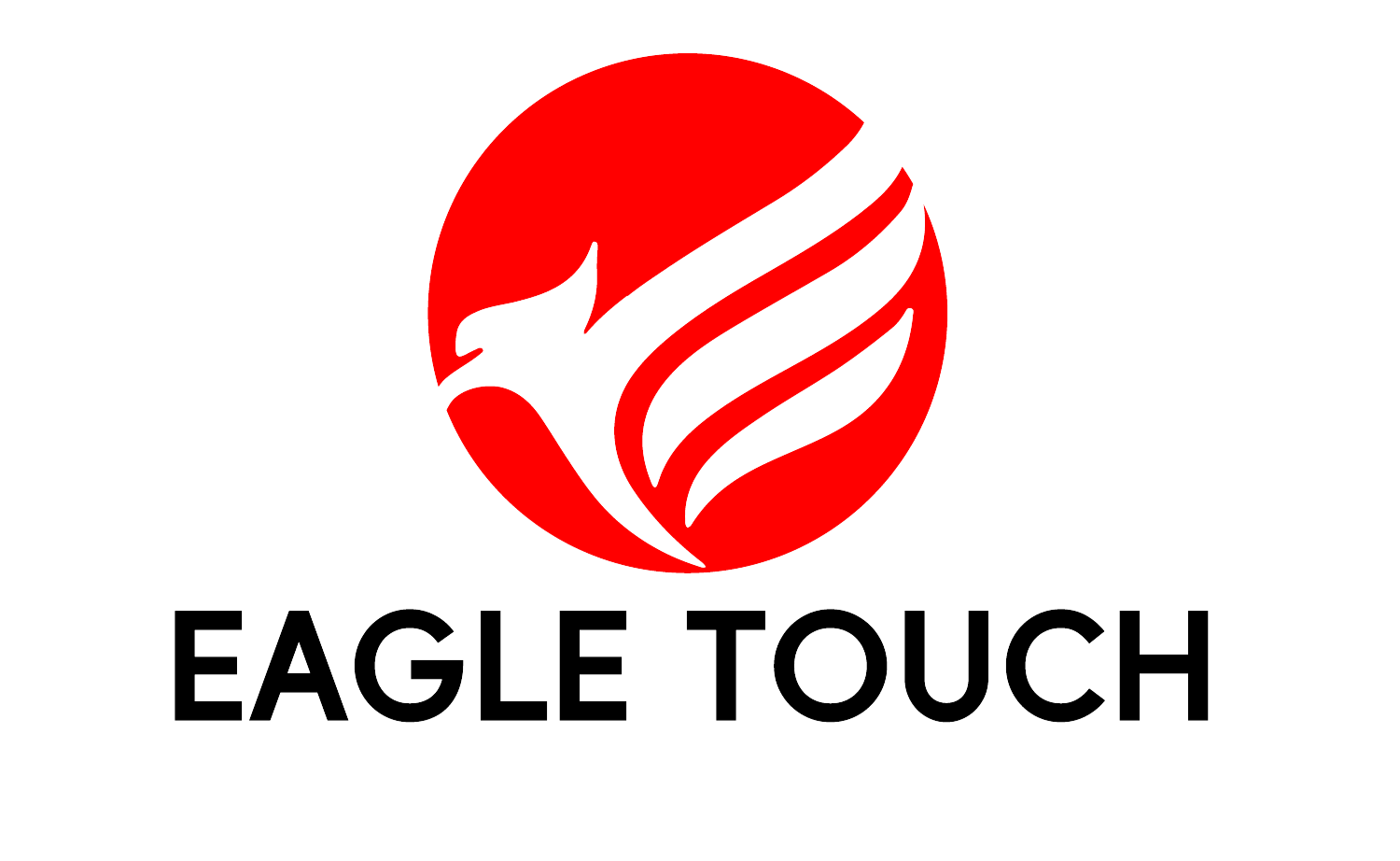Table of Contents
Liquid Crystal Display (LCD) technology, a cornerstone of modern digital displays, harnesses the light-modulating properties of liquid crystals combined with polarizers to render images. Pioneered in the late 1960s, LCDs offered a thinner, energy-efficient alternative to cathode ray tube (CRT) technology. Over the decades, advancements in LCD technology have vastly improved display quality, efficiency, and versatility, making LCDs the preferred choice for a wide range of applications including televisions, computer monitors, and mobile device screens. This evolution from simple digital watches to sophisticated high-definition screens marks LCD’s remarkable journey through technological innovation.
LCD Technology and Terminology: An Overview
LCD technology encompasses a variety of display types, each utilizing liquid crystals and polarized light to produce images. Key terms include Active-Matrix (AM), Passive Matrix (PM), Thin-Film Transistor (TFT), and configurations like IPS and TN, resolution, and brightness, crucial for understanding differences in display quality, response times, and viewing angles.
What’s The Types of LCD?
The world of Liquid Crystal Displays (LCDs) is broadly divided into two main categories: Passive Matrix LCDs (PM LCDs) and Active-Matrix LCDs (AM LCDs). Understanding the differences between these technologies and the role of Thin-Film Transistor (TFT) technology is crucial for selecting the right type of display for various applications.
Differences between Passive Matrix LCDs (PM LCDs) and Active-Matrix LCDs (AM LCDs)
Passive Matrix LCDs (PM LCDs):
- Technology: Rely on a grid of vertical and horizontal conductors to control pixel illumination. Each pixel is addressed at the intersection of this grid.
- Pros: Simpler construction and typically lower cost. Consumes less power, making it suitable for devices where battery life is crucial.
- Cons: Slower response times and limited color display capabilities. This leads to ghosting effects in fast-moving images and poorer viewing angles.
Active-Matrix LCDs (AM LCDs):
- Technology: Utilize a thin-film transistor (TFT) for each pixel, allowing for individual control of pixel states. This architecture significantly improves display quality and responsiveness.
- Pros: Higher contrast ratios, improved brightness, faster response times, and the ability to display full-motion video without ghosting. Offers superior color reproduction and wider viewing angles.
- Cons: More complex manufacturing process, which can increase the cost. Generally consumes more power than PM LCDs.

Liquid Crystal Configurations for PM displays
Liquid Crystal Configurations for Passive Matrix (PM) displays primarily involve various arrangements of liquid crystals to manipulate light in specific ways. These configurations define how the display controls the alignment of liquid crystals and, consequently, how it modulates light to produce images. Here’s an overview of the common liquid crystal configurations used in PM displays:
1. Twisted Nematic (TN)
Description: In TN displays, the liquid crystals are twisted in a helical structure and untwist when a voltage is applied, allowing light to pass through at varying degrees. This configuration is known for its low production cost and fast response times, making it suitable for basic display needs.
2. Super Twisted Nematic (STN)
Description: STN is an advancement over the basic TN configuration, where the liquid crystals are twisted at a greater angle (typically between 180° and 270°). This allows for improved passive matrix addressing schemes, resulting in better contrast and viewing angles than TN. STN displays often have slower response times and are used in applications where color fidelity and fast motion aren’t critical.
3. Film Compensated Super Twisted Nematic (FSTN)
Description: FSTN adds a compensating film to the STN display to improve the viewing angles and legibility under various lighting conditions. The compensating film helps to counteract the color shift seen in standard STN displays, making FSTN a popular choice for applications requiring clearer displays, such as digital watches and calculators.
4. Double Layer Super Twisted Nematic (DSTN)
Description: DSTN technology uses two layers of liquid crystals, significantly improving the quality of the display compared to standard STN by reducing the ghosting effect and improving contrast. This configuration was more common before the widespread adoption of TFT displays.
Each of these configurations has its specific advantages and trade-offs, making them more or less suitable for different applications. TN is favored for its speed, making it common in calculators and basic digital watches, whereas STN and its derivatives offer better viewing properties, making them suitable for more demanding applications that still require the cost-effectiveness and simplicity of passive matrix technology.

Advanced Liquid Crystal Configurations for AM Displays
Active-Matrix (AM) displays, enhanced by Thin-Film Transistor (TFT) technology, utilize advanced liquid crystal configurations to achieve superior image quality, wider viewing angles, and faster response times. These configurations are pivotal in providing the high-quality visuals expected from modern displays, including smartphones, TVs, and monitors.
In-Plane Switching (IPS)
- Description: IPS technology allows liquid crystals to align horizontally to the display panel, ensuring color consistency and clarity at wider viewing angles compared to traditional TN panels. This configuration is renowned for its accurate color reproduction and excellent viewing angles, making it ideal for professional photography and design monitors.
Vertical Alignment (VA)
- Description: VA panels align liquid crystals vertically when no voltage is applied, offering higher contrast ratios and deeper blacks than IPS technology. VA displays are known for their strong performance in dark viewing environments, making them suitable for movie watching and gaming.
Multi-domain Vertical Alignment (MVA) and Patterned Vertical Alignment (PVA)
- Description: Both MVA and PVA technologies improve upon basic VA panels by providing wider viewing angles and better color reproduction. They achieve this through advanced liquid crystal structuring, which allows for more precise control over the light passing through the panel. These panels are a good compromise between the high contrast of VA panels and the color accuracy and viewing angles of IPS panels.
Advanced Super View (ASV)
- Description: Developed by Sharp, ASV is a type of VA technology that offers enhanced viewing angles and brightness, competing closely with IPS technology. It’s particularly beneficial in devices where viewing from various angles without color shift is important.
Fringe Field Switching (FFS)
- Description: Similar to IPS, FFS technology offers even wider viewing angles and higher transmittances. This makes FFS panels ideal for high-end smartphones and tablets where power efficiency and visibility in sunlight are crucial.
The Role of Thin-Film Transistors (TFT) in Modern Displays
The Thin-Film Transistor (TFT) is a fundamental component that has revolutionized AM LCD technology. Each pixel on an AM LCD is controlled by at least one TFT, allowing for direct control of the brightness of each pixel. This direct pixel control enables:
- Higher Resolution: TFT technology allows for the manufacturing of displays with very high pixel densities, essential for the sharp, clear images seen on modern devices.
- Improved Response Times: The ability to quickly switch each pixel on and off leads to significantly reduced motion blur, crucial for video and gaming.
- Increased Color Accuracy and Contrast: By precisely controlling the voltage applied to each pixel, TFTs improve the display’s ability to render colors accurately and maintain high contrast ratios.
The advent of TFT technology has made possible the production of the AM displays that dominate today’s market, offering an unparalleled combination of resolution, color fidelity, and viewing angles. This technology continues to evolve, pushing the boundaries of what’s possible in display quality and performance.
What are the Key Components of TFT LCD?
The performance and capabilities of LCD (Liquid Crystal Display) panels are significantly enhanced by various key components and technologies in their periphery. These elements play crucial roles in processing signals, connecting components, and ensuring the overall reliability and functionality of the display system. Here’s an overview of these essential components and technologies:

Liquid Crystal Layer:
The core of the display, where liquid crystal molecules are contained within two glass plates. These molecules adjust their orientation in response to electric fields, controlling light passage.
Thin-Film Transistors (TFT):
Located on one of the glass plates, these transistors act as individual switches for each pixel, allowing for precise control over the display’s color and brightness at each pixel point.
Color Filters:
Integrated into the display, color filters are used to produce colors by filtering the backlight into red, green, and blue components. Each pixel typically has three sub-pixels with these filters to create the full-color spectrum.
Polarizers:
Two polarizing filters, one on the front and one on the back of the liquid crystal layer, control the direction of light entering and exiting the display. This ensures that only the light aligned with the liquid crystals’ orientation can pass through.
Backlight Unit (BLU):
Since TFT LCDs do not emit light by themselves, a backlight is required to illuminate the display. LED backlights are commonly used for their efficiency and brightness.
Glass Substrates:
These provide the structural framework for the display, supporting the liquid crystal layer, TFTs, and color filters. The substrates also serve as conduits for electrical signals to the TFTs and liquid crystals.
Driver ICs:
Integrated circuits are responsible for controlling the TFTs, interpreting input signals, and managing the display’s overall operation, including brightness, contrast, and refresh rate adjustments.
Flexible Printed Circuits (FPC) or Ribbon Connectors:
These components connect the display to the rest of the device, transmitting control signals and power to the display.
Together, these components enable TFT LCDs to deliver sharp, vibrant images with precise control over each pixel, making them a popular choice for a wide range of applications, from smartphones and tablets to monitors and TVs.
What are the Innovations and Trends in LCD Technology?
Innovations in LCD technology are shaping a future where displays are more vivid, efficient, and adaptable than ever before. High Dynamic Range (HDR) enhances visual contrast and color depth, while Mini-LED and Micro-LED technologies promise superior brightness and energy efficiency. Quantum dots improve color accuracy, and flexible displays pave the way for innovative device designs. Higher refresh rates ensure smoother motion, crucial for gaming and dynamic content. Together with advancements in touchscreen functionality and efforts to boost energy efficiency, these trends highlight a relentless pursuit of excellence in LCD development, promising enhanced user experiences across various applications.





